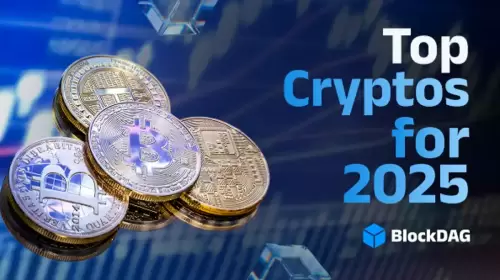Tron Inc.'s Nasdaq debut via reverse merger: a deep dive into market response, strategic shifts, and the implications for blockchain's integration with traditional finance.

Tron's Nasdaq Debut: Reverse Merger, Market Reaction, and the Future of Blockchain Finance
Tron Inc. made waves with its Nasdaq debut through a reverse merger, but the initial market reaction wasn't all sunshine and roses. Let's dive into what happened and what it means for the future of blockchain meeting Wall Street.
The Reverse Merger Route to Nasdaq
On July 24, 2025, Tron Inc. (formerly SRM Entertainment) officially began trading on the Nasdaq after a $100 million reverse merger. This move, spearheaded by Justin Sun, aimed to integrate Tron's blockchain ecosystem with traditional capital markets. The idea? To attract institutional investors and legitimize crypto in the eyes of the old guard. But did it work?
Initial Market Jitters
Despite the fanfare and a bell-ringing ceremony in Times Square, Tron's stock (TRON) experienced a rocky start. Shares dipped 10% to $8.85, and the Total Value Locked (TVL) on the Tron network also saw a decline. It seems the market wasn't immediately convinced by the blockchain-integrated treasury strategy.
The $210 Million TRX Treasury Play
A key part of Tron's strategy is its $210 million TRX treasury, designed to stabilize the token's value and fuel ecosystem growth. By holding a significant reserve of its own cryptocurrency, Tron aims to demonstrate confidence in the long-term viability of its blockchain. This approach is intended to reduce dilution risks and reinforce TRX's utility as a reserve asset, crucial for gaining investor trust.
A Bridge Between Two Worlds?
Tron's Nasdaq listing represents a significant step towards bridging decentralized and traditional finance. By operating under Nasdaq's regulatory standards, Tron Inc. seeks to attract institutional investors who might have previously shied away from direct crypto exposure. The listing also enhances the platform's visibility, offering a regulated pathway for institutional capital to engage with blockchain technology.
My Two Satoshis
While the initial market reaction was lukewarm, it's important to remember that Rome wasn't built in a day. Tron's move to Nasdaq is a bold experiment, and it's likely to face challenges along the way. Whether this reverse merger truly paves the way for widespread institutional adoption of crypto remains to be seen, but it definitely got people talking. The hybrid approach—combining public market credibility with blockchain innovation—may encourage other crypto firms to adopt similar strategies, further blurring the lines between decentralized and traditional finance. Market observers are closely monitoring regulatory developments and the firm’s ability to maintain transparency and investor confidence through strategic adaptability.
What's Next for Tron?
Tron Inc. is positioned to develop hybrid financial products, such as tokenized assets and institutional-grade DeFi solutions, leveraging its Nasdaq infrastructure and TRX treasury. The listing also enhances Tron's ability to attract top talent from both tech and finance sectors, strengthening its innovation pipeline. However, balancing decentralization principles with corporate governance will remain a challenge. The success of Tron Inc Nasdaq could influence the TRX token’s demand and stability, though the direct correlation between the publicly traded entity and the decentralized blockchain is not guaranteed.
The Bottom Line
Tron's journey to Nasdaq is a fascinating case study in the evolving relationship between blockchain and traditional finance. It's a bit of a rollercoaster ride, but hey, isn't that crypto in a nutshell? Only time will tell if this reverse merger will be a smashing success, but one thing's for sure: it's going to be an interesting ride.














































































